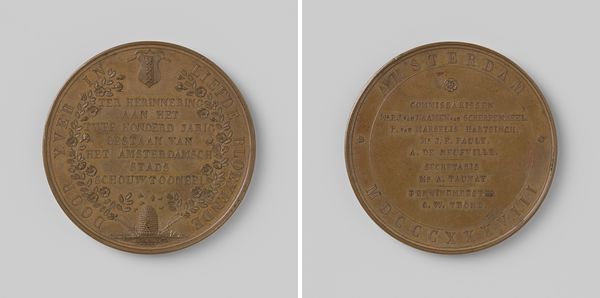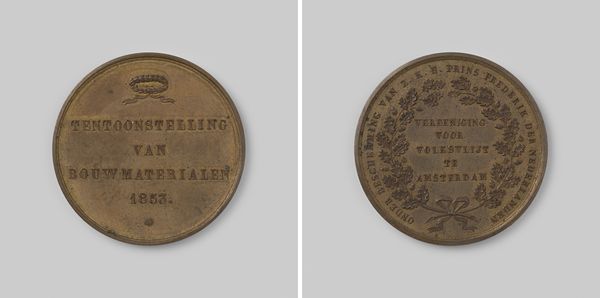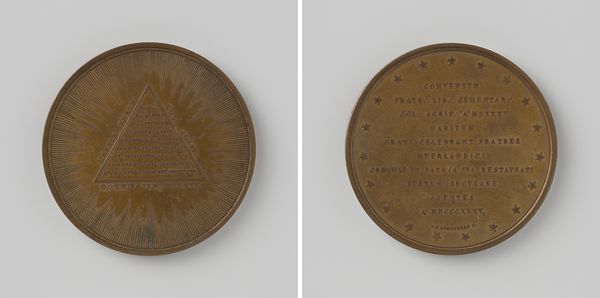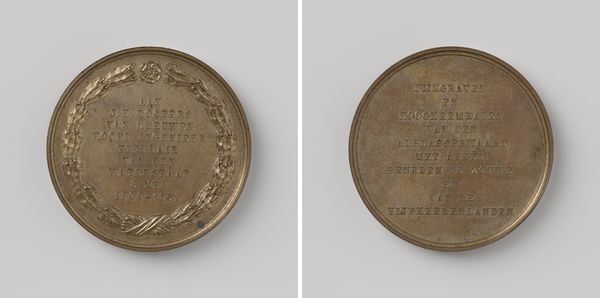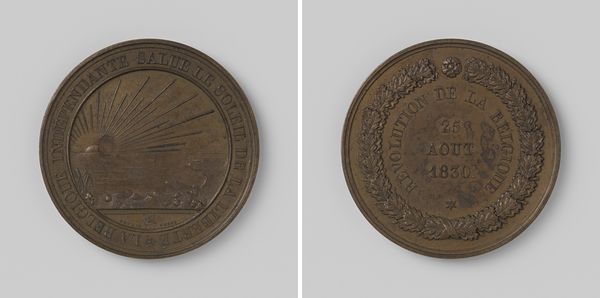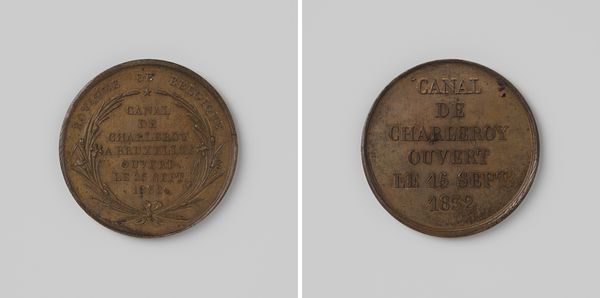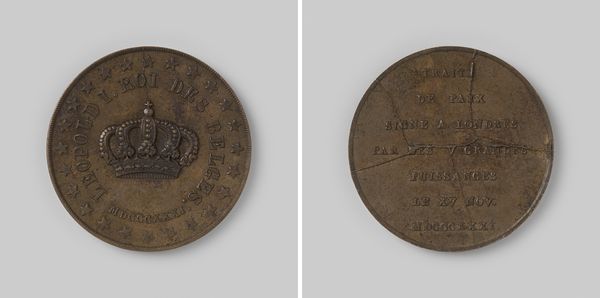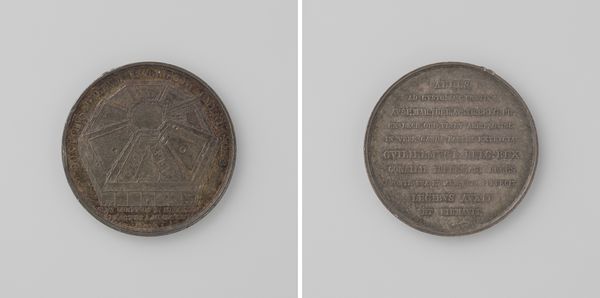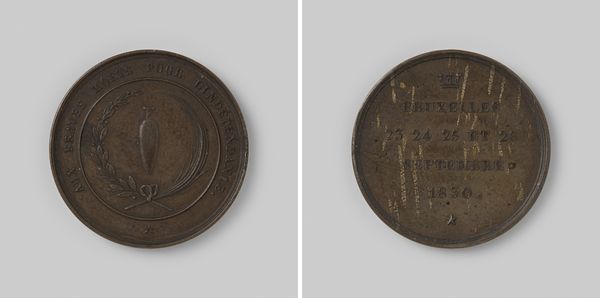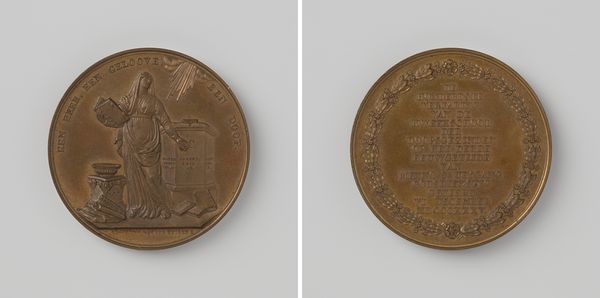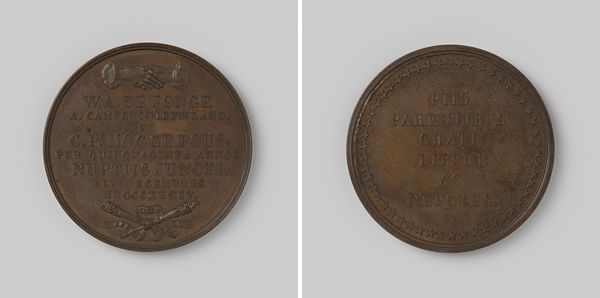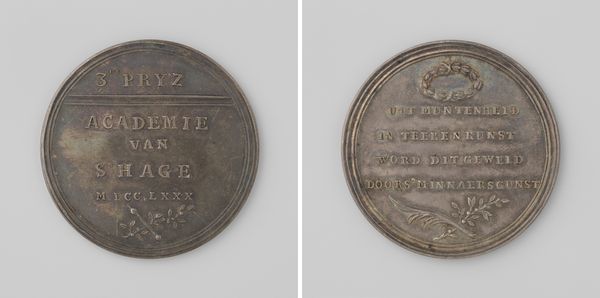
bronze, sculpture
#
neoclacissism
#
bronze
#
sculpture
#
history-painting
Dimensions: diameter 4 cm, weight 37.94 gr
Copyright: Rijks Museum: Open Domain
Editor: Here we have M. Borrel's bronze sculpture, "Het Belgisch congres bevestigt het voorlopig bewind," dating to around 1830. It seems to commemorate a political event. What's your read on this? Curator: This bronze piece gives us a glimpse into the birth pangs of a nation. Think about it: 1830. Revolution is brewing across Europe, including what is now Belgium, which was then part of the Kingdom of the Netherlands. It's not just about aesthetics. Can you see how the rigid Neoclassical style reflects a desire for order and legitimacy during a time of great upheaval? Editor: The circular format does make it seem like a coin or a medal, like it's celebrating or validating something specific. The seating chart depiction is interesting. Curator: Precisely. It depicts the seating arrangement of the National Congress. The seating is organised to suggest that they see themselves as part of some wider societal re-structuring project. They had to design the very structures that governed society, didn’t they? How might this influence its meaning in the context of the 1830s, especially regarding national identity? Editor: I suppose it underscores how democracy relies on these seating arrangements for visual legitimacy. But I still can't quite reconcile this with contemporary theory. Curator: Consider the very notion of “nation” being constructed in that time. Who was included and excluded from this new Belgian identity? What social and economic forces were at play, and how did this confirmation solidify a certain power structure? These are important questions. Editor: It is fascinating to look at the broader cultural context around this seemingly simple commemorative medal. Thank you for highlighting the political dimensions, it definitely enriches the work. Curator: Absolutely. Seeing art as deeply embedded within sociopolitical landscapes is, to me, where the real power of art history lies.
Comments
No comments
Be the first to comment and join the conversation on the ultimate creative platform.

